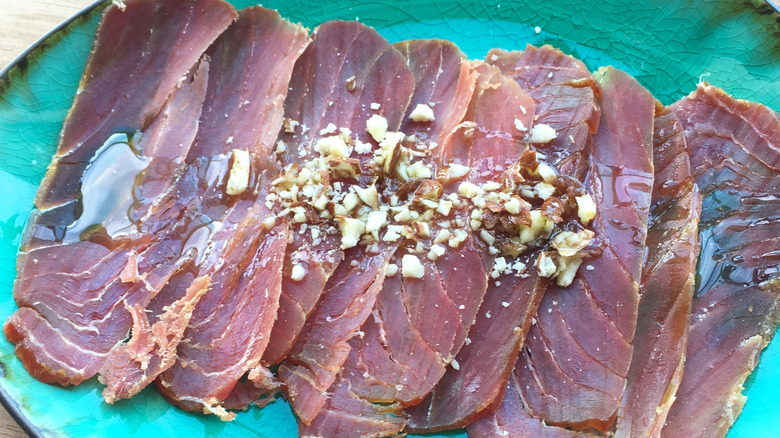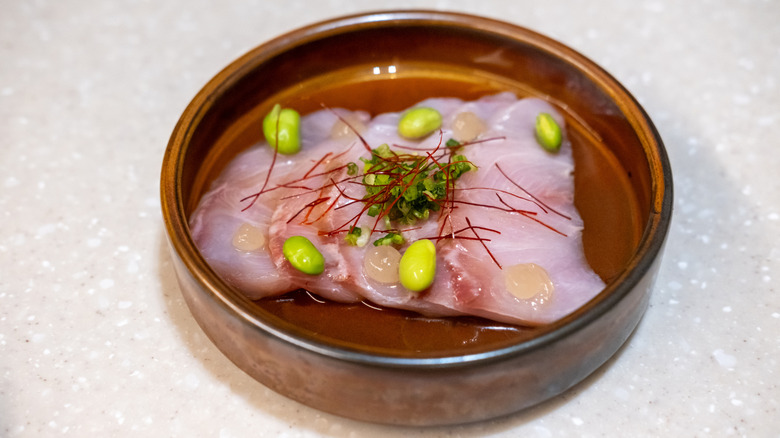Can You Dry-Age Fish? Here's Which Ones You Should Be Using
There are plenty of ways to cure a fish, and many are simple enough: the pickled fish that Martha Stewart enjoys uses mostly salt and vinegar, and a quick brine needs little else besides salt and water. Dry-aging a fish is a different matter, but the difference in taste is noticeable when done by a skilled chef. When you dry-age any meat, you're letting it sit for long periods of time to intensify its flavor and its tenderness. If you do it wrong, it sits there and rots. It can be tricky to get right — should you try this at home, then?
It absolutely helps to get expert advice before you experiment with meat, so we spoke to Hidekazu Kato, the chef de cuisine at the Park Hyatt Niseko Hanazono in Japan. Kato explained that dry-aging fish at home is possible, but it's risky, and you need to be cautious. According to Kato, "It's not impossible if you have an environment with low temperatures, proper humidity, and air circulation." What fish should you be using? Kato recommends sea bream and flounder as his first picks, along with tuna and yellowtail. He explains, "This is because when they're fresh, the flesh is firm, and aging them increases their umami. However, incorrect conditions can lead to decay and the growth of food poisoning bacteria."
Age your fish carefully
When attempting to age fish, Hidekazu Kato told us that a regular household fridge may not cut it because constantly opening and closing the fridge door will ruin the aging setup. There are specialty fridges meant for dry-aging foods, but they're expensive if you're just starting out. If you don't have that, what you're looking for is a "chilled compartment, where the humidity is controlled," Kato specified. Keep it cold, around an average of 36 degrees Fahrenheit — this is the temperature at which restaurants store fish to keep them fresh. Without a specialty fridge, some people have tried a dedicated mini-fridge which stays shut, especially if there's a humidifier (or a cold-friendly dehumidifier) inside too, to keep humidity levels balanced. Keeping moisture away is critical, though, and many others still report that regular mini-fridges just aren't right for the job.
There are also several species which do not handle dry-aging well. Kato said, "Oily fish such as mackerel and sardines spoil quickly, and salmon is dangerous because it can have parasites." Even outside of aging, a dry texture on store-bought salmon is a red flag to watch out for in general. In the end, Kato suggested that you might consider wet-aging your fish instead. "After thoroughly bleeding and gutting the fish," he explained, "wrap it in a paper towel, then wrap it again in plastic wrap. Place it on a wire rack or similar tray to allow for air circulation, and let it rest in the chilled compartment for several days."

